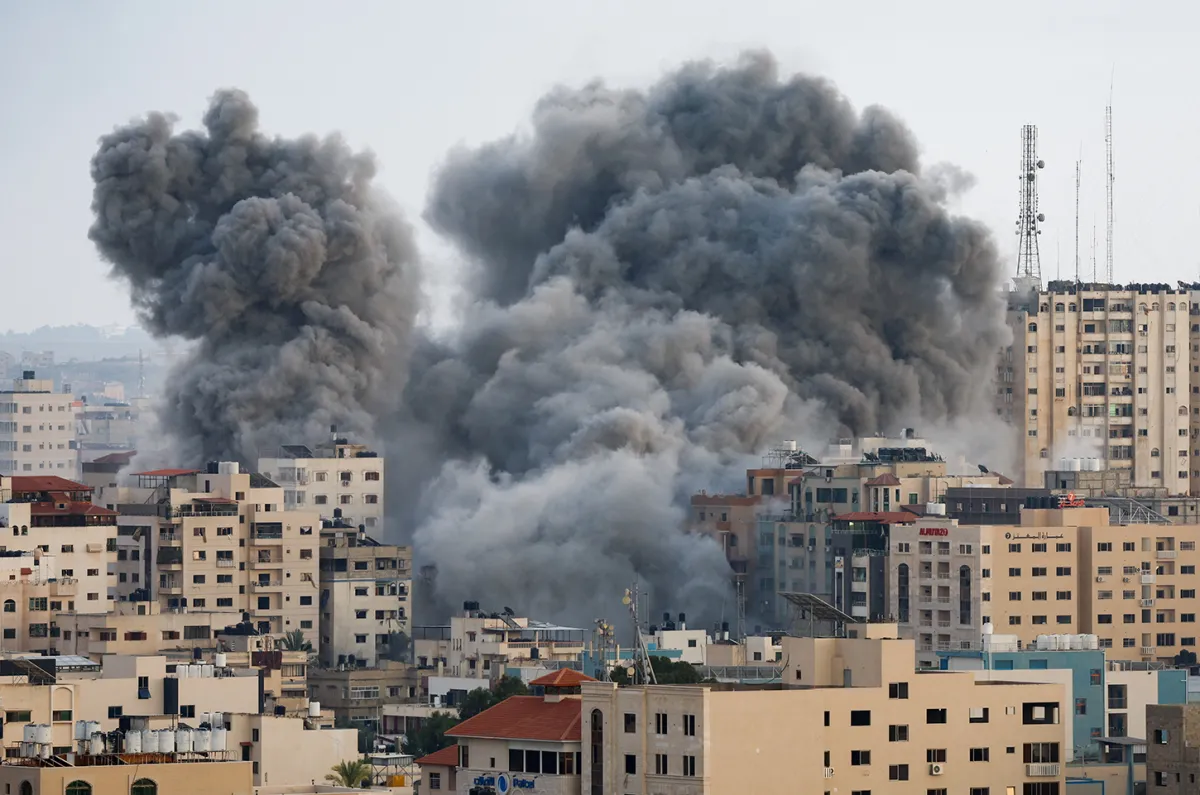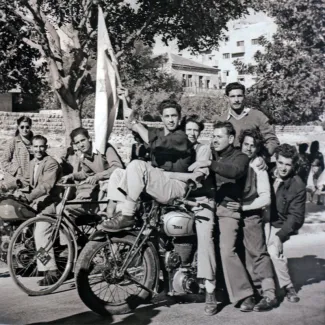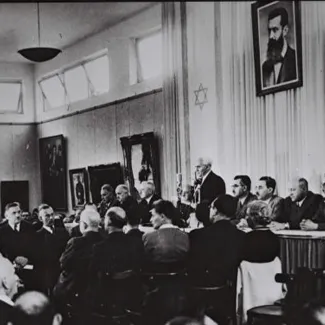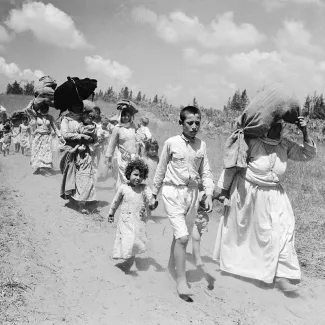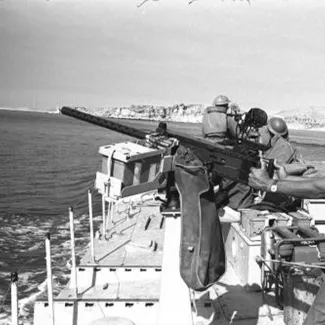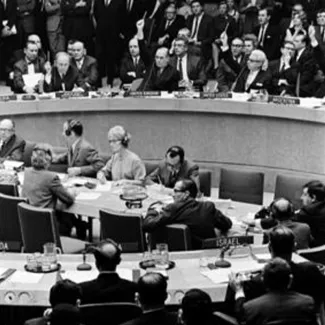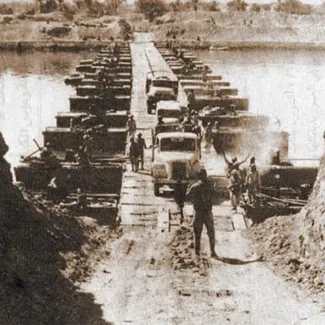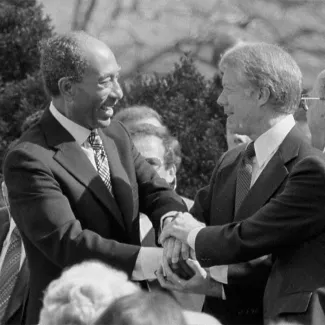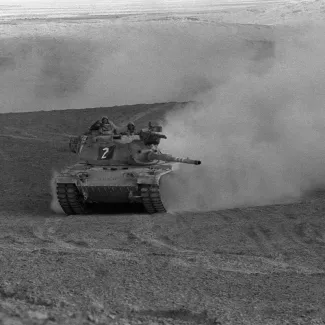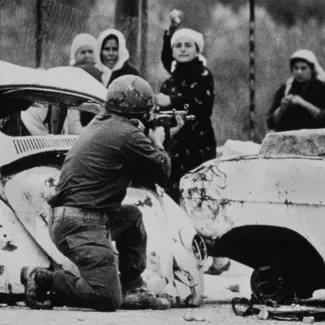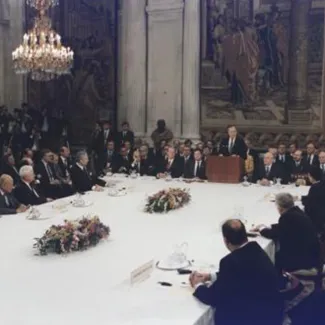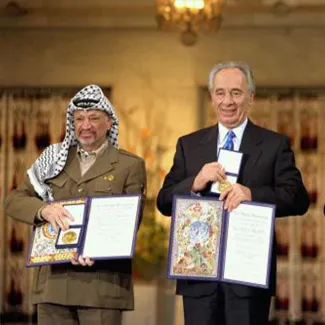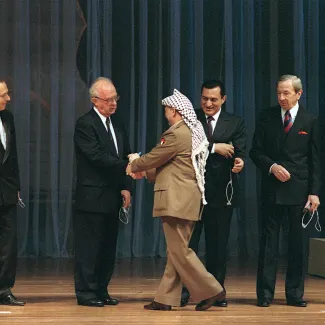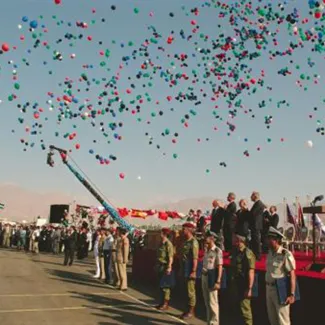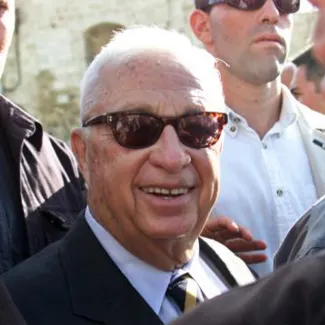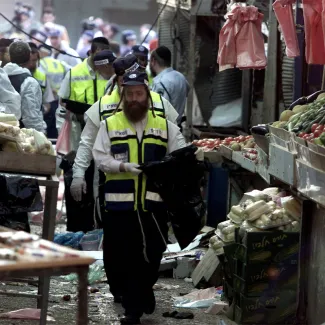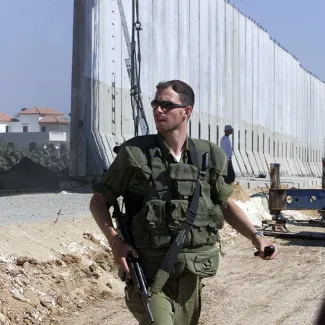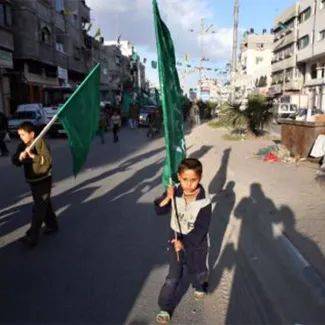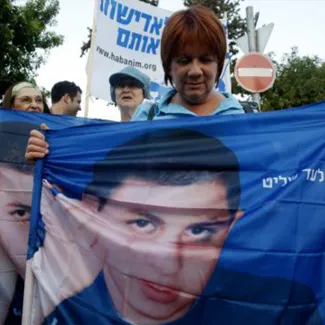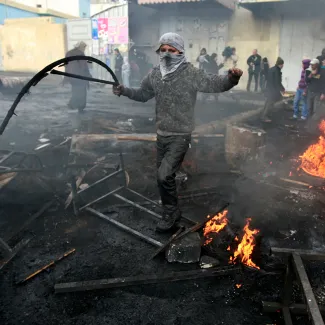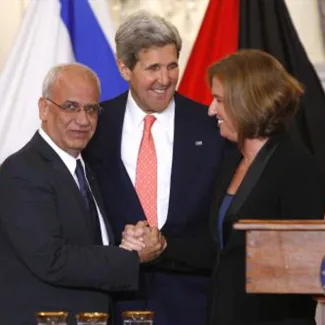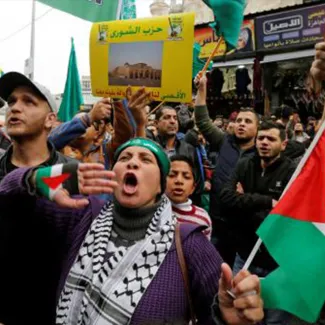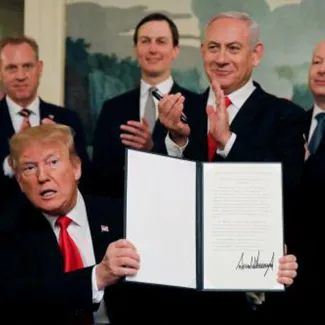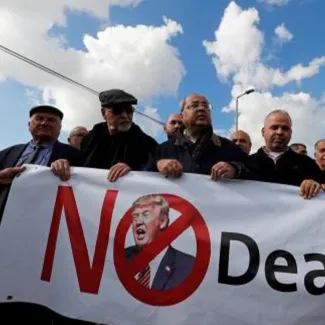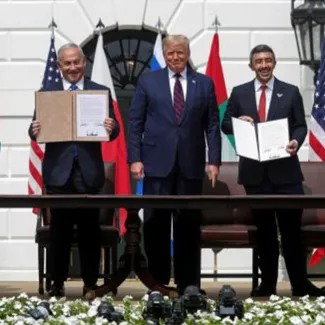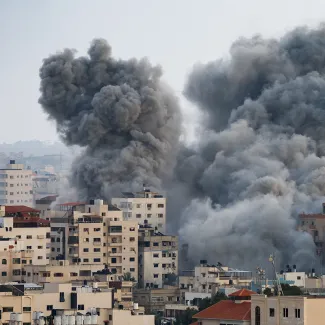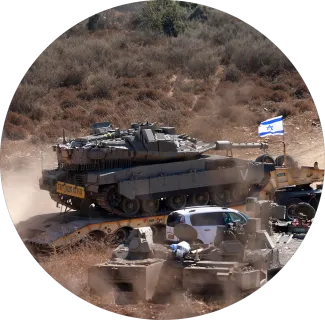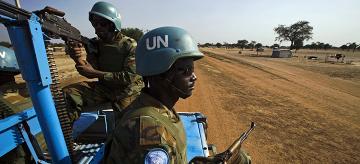Israeli-Palestinian Conflict Timeline
Explore the history and important events behind the long-standing Middle East conflict between the Israelis and the Palestinians from 1947 to today.
The conflict between the Israelis and the Palestinians reflects a long-standing struggle in the region encompassing the land between the Jordan River to the east and the Mediterranean Sea to the west. That conflict has deep historical roots, shaped by statehood claims from the Israelis and the Palestinians that have been supported by various international agendas and activities over time.
The Israeli-Palestinian conflict dates back more than a century, with flashpoints building from the United Nations’ 1947 initial UN Partition Plan to the 1973 Yom Kippur War, to the recent Israel-Hamas war sparked in October 2023.
Despite continued efforts at brokering peace—including the 1979 Camp David Accords, the Oslo Accords of the 1990s, and the 2020 Abraham Accords—conflict has persisted.
This timeline explores some of the pivotal moments in the conflict from 1947 to today.
UN Partition Plan
Israel Declares Independence
UN Addresses Palestinian Displacement
The Six-Day War
UN Security Council Resolution Calls for Israeli Withdrawal
The Yom Kippur War
The Camp David Accords
Israel Withdraws From the Sinai Peninsula
First Intifada
Jordan Surrenders Claims on the West Bank and East Jerusalem
The Madrid Peace Conference
The Oslo Accords
The Gaza-Jericho Agreement
Israel and Jordan Sign a Peace Treaty
Oslo II Accord
Camp David Summit
The Second Intifada
The Passover Massacre
Israeli West Bank Barrier-Building Begins
Road Map for Peace
Israeli Disengagement With Gaza
Hamas Expands Power in Gaza
Gilad Shalit Taken Hostage
Israel Attacks the Gaza Strip
Negotiations Face Continued Hurdles
Tensions Between the PLO and Hamas
Operation Protective Edge
The U.S. Formally Recognizes Jerusalem as the Capital of Israel
The U.S. Recognizes Israeli Sovereignty Over the Golan Heights
Trump Administration Launches Proposed Peace Plan
Relations between Some Arab Countries and Israel Normalize
2021 Israel-Hamas Crisis
Deadly Year in Israeli-Palestinian Conflict
Hamas Launches Surprise Attack on Israel
Israel Expands Operations Into Lebanon, Iran Retaliates
